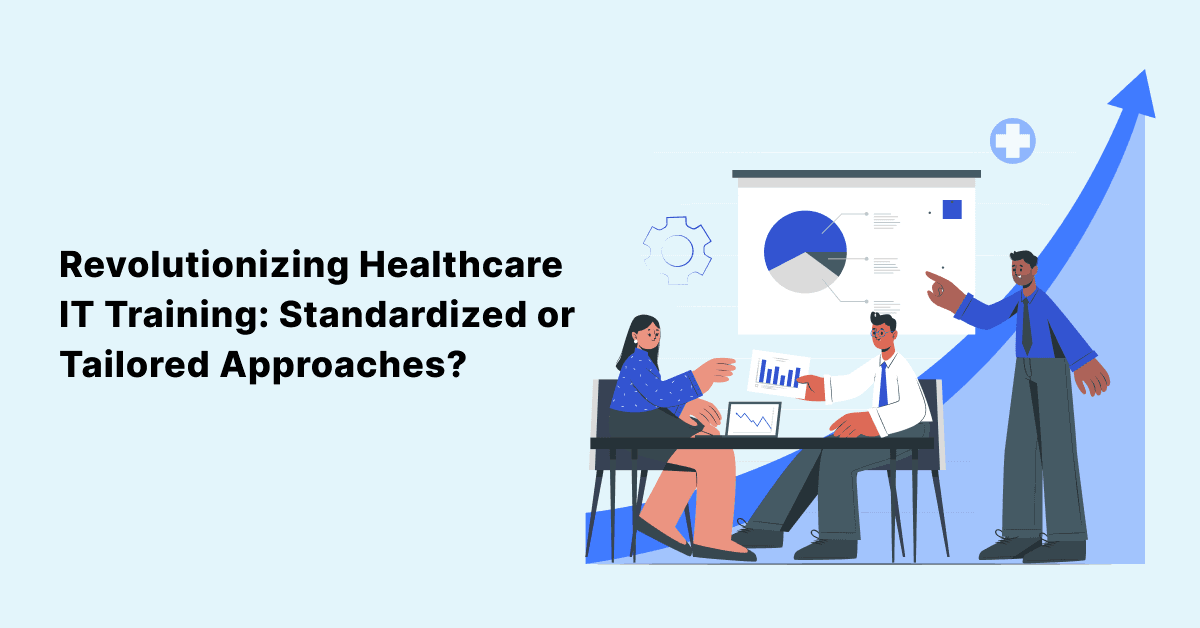
Jeeves Helps Clinicians Get Back Their Pajama Time
According to a recent study by the Annals of Family Medicine, clinicians spend nearly 90 minutes in their …

In some healthcare IT implementations, a Trainer and a Super User may be two distinct roles filled by two different resources. But in the spirit of streamlining, it’s worth identifying folks who can wear both hats, so to speak. The goal of assigning this role is determining who will be tasked with the extensive training and responsibilities associated with not only mastering the EHR or health solution(s) in play but also helping other end users effectively use the tools for care delivery or operations.
There are a handful of qualities that health systems should look for when selecting the trainer(s) who will utilize digital learning practices within a ToT model to support end users. Since this task is a marriage of both technical acumen with the solution itself (such as Epic) and with e-learning tools (such as Web-Ex), there are unique needs to execute strongly:
Selecting the right people as Super Users to drive a Train-the-Trainer approach to digital learning will go a long way in ensuring the success of the technology initiative.
In order to best facilitate and deliver solid EHR training, the trainer must be equipped with all the support and instruction possible to provide a well-rounded tour of the solution. This is not to say that the employed trainer must become certified on Epic, but rather that they have the knowledge base to feel confident in presenting the material. This includes knowing where to go when they don’t know the answer, such as Technical Support/IT, the implementation team, or Help Desk resources for troubleshooting. In some cases, connecting the local trainer with a certified Epic ATE trainer may, in fact, be the optimal resource for the types of questions or concerns that arise.
Health systems do well to ensure that digital learning trainers have access to every tool needed — including solutions experts — to encourage competence and minimize delays in rolling out training to end users.
If the ToT model is leveraged, it’s important to help the designated trainer(s) with the logistics involved in deploying the digital learning classes. Perhaps the Super Users are administratively gifted and can easily run with all aspects of training, including scheduling, communicating with participants, setting up the AV components, etc. However, it’s important to validate the availability and ability of trainers to manage this aspect of e-learning to drive successful training. It’s very possible that a gifted trainer may struggle immensely with the logistics of virtual instruction, so ask and assist as needed to keep the focus where it’s most vital.
When it comes to digital learning best practices, having a feedback loop is crucial for measuring the success of training. EHR digital learning is no different, especially when a Train-the-Trainer approach is taken. Utilizing a quiz within the training materials or online course, or even following up with a survey to attendees, is a great way to measure competence with the training material/training subject, as well as evaluate the effectiveness of the trainer delivering the message. This creates accountability while ensuring that the trainer has the data to seek further training for themselves or alter their approach to encourage adoption.
Taking the approach of a Train-The-Trainer model for digital learning cultivates in-house SMEs on healthcare IT solutions that can be utilized exactly as needed. The key is setting up training resources for success to deliver the right content via the right medium to optimally support busy end users within the organization. Deploying a ToT strategy for ongoing virtual training initiatives is a great way to scale while developing a deep knowledge base.
Join over 3,200 subscribers and keep up-to-date with the latest innovations & best practices in Healthcare IT.

According to a recent study by the Annals of Family Medicine, clinicians spend nearly 90 minutes in their …

If you’ve had the feeling your brain is so full that it couldn’t possibly handle one more thought, you’re not …

Navigating through new software without any guidance or support can be a nightmare, right?
Now, imagine the …